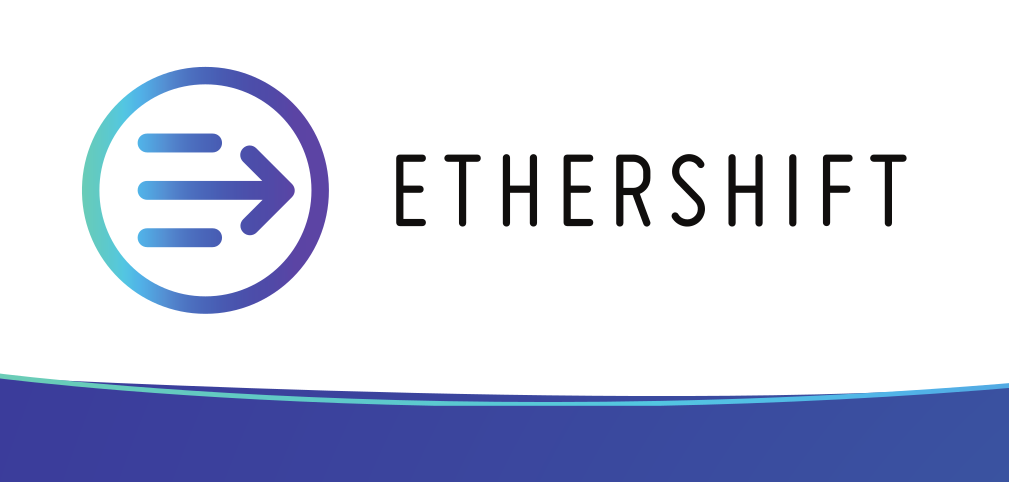India’s 1% tax has dealt a heavy blow to crypto trading volumes

The Indian government has officially announced that it will implement a 0.75% tax on all crypto trading, effectively bringing trading books to a standstill. Crypto users were already feeling the effects of the 1% cryptocurrency tax earlier this month, as volumes in large markets like South Korea have fallen by more than 50%. The result is likely to be even heavier losses for India’s local exchanges, which have one of the highest fees and commissions in the world.

Despite the tax of only 0.75%, users on India’s leading cryptocurrency exchange Zebpay are planning a mass exodus from the industry in response. “The business opportunity in India will disappear,” said one user, while others claimed that they plan to sell their holdings and move abroad for more favourable jurisdictions. The sentiment is mirrored across Korean trading platforms, where traders have transitioned into Japanese and Japanese-based exchanges.
Though the tax was still awaiting official approval from India’s parliament, it was already being implemented by exchanges. Cryptocurrency advocates are already looking for solutions to the Indian government’s problem with “black money,” with some suggesting that a move towards a cashless society could help eliminate much of the crime and corruption that plagues India.
The Indian crypto industry has been beaten over the last month, as Bitcoin has lost more than 20% of its value since April 1st. Though the move was seen by many as an attempt to slow down trading, many traders said that the 1% tax would do just the opposite. “In my opinion, India’s 100% GST is a Robin Hood kind of move. Markets are not going to explode after this; prices are expected to stabilize,” said one trader. The Indian government has already provided its reasoning for implementing a 0.
The Indian government has been working on a policy framework for cryptocurrency since mid-2016. The government announced an objective of allowing crypto use to capture the benefits of “decentralization and efficiency.” This announcement was followed by a special committee that would procure a report within 180 days.
The government has promised to issue cryptocurrency-focused licenses for payments, remittances and settlements. As part of its crackdown on illegal activities, India’s Supreme Court banned 500 and 1000 rupee notes on 8 November 2016. India is one of the biggest business hubs in Asia, with many startups which are now looking at blockchain technology to make their services faster and better. One such cryptocurrency exchange is Unocoin, founded in 2013, which allows users to buy bitcoins using their bank accounts.
The crypto industry is already reeling from a massive market-wide correction that followed China’s ban on ICOs late last year. Crypto markets have been trying to recover since the middle of January, but India’s new trading tax is likely to exacerbate the losses further. Domestic sales have reacted quickly by lowering their trading fees in response to the 1% tax on crypto trading. The fee cuts vary depending on the exchange, with Coinome choosing a 0.5% fee.

Zebpay, another Indian exchange, is set to implement a 0.1% trading fee, with similar cuts expected to be implemented by other sales in the coming days. The measures are designed to encourage traders to keep their digital assets in rather than trading them, but it remains unclear whether they will be successful.
India’s central bank has issued a statement that “using virtual currencies are exposed to potential financial, operational, legal and security related risks.” The Reserve Bank of India also noted the risk of virtual currencies being used for illegal activities like funding terrorism.
Binance, however, is optimistic that the reduction in volumes will be offset by an increase in adoption. The exchange’s CEO has said that the recent decrease in volume means that “the interest in cryptocurrencies is beginning to recover.” The 1% tax on trading exchanges is the third to be levied in India. In July 2018, the finance ministry announced a 7-per cent tax on all crypto-to-fiat trades.
Cryptocurrency trading volumes are in the dumps. CoinMarketCap, one of the most popular cryptocurrency price-tracking websites, has recently reported that volumes across all markets have dropped by more than 50 per cent. The news comes as a surprise, considering that China’s ban on initial coin offerings (ICO) has not had any significant impact on trading volumes.
What is Bountyhive?
Bountyhive is a unique platform that helps ICOs and crypto startups to raise their funds via bounty campaigns. It enables startups to run their bounty campaigns quickly and allows users an opportunity to earn rewards for supporting projects they would like to see succeed. In simple terms, Bountyhive works as a matchmaking platform that brings startups together with potential supporters worldwide.
How does Bountyhive work?
Startups create an account on the platform, upload their white papers, and describe their upcoming ICOs. They then choose bounties they would like to offer and set the participation rules and bounty distribution structure. After creating a campaign, startups get a link that they can use to spread their message across the web. Users interested in participating in the ICO then click this link, after which they will be redirected to a particular campaign page with all the relevant information about bounty tasks.
Having a Bountyhive campaign has additional benefits to it. It allows users to have more control over their funds, and they can decide where the funds go and how they are utilized. Bountyhive offers users the option of managing their bounties in ETH or tokens so that the funds can be withdrawn at any time.
What is Ethershift?
Ethershift is a new crypto exchange that has recently opened its doors to the public. The platform offers users a wide range of crypto trading pairs for the popular cryptocurrencies, bitcoin and ether. It allows users to buy bitcoin and other cryptocurrencies with fiat currencies, as well as exchange different digital assets from within the same platform.
Ethershift has a straightforward user interface, and anyone can use it without any issues. Of course, the platform has its token called ESH, and users can benefit from a 50% discount on all fees charged by the business when they pay their fees in this currency. The exchange also has an integrated e-wallet that allows users to easily store, send and receive digital assets like bitcoin and ether. The wallet is integrated with the Ethershift platform, so you do not need to go through complicated registration processes to use it.
Started by a group of crypto enthusiasts, Ethershift was primarily developed to make cryptocurrencies easy to invest in and more affordable to everyone. The platform is designed with user experience in mind and presents all the relevant information that users need in an easy-to-understand way. Another great thing about Ethershift is that it offers automatic crypto trading. You do not need to deposit your funds into the platform’s wallet unless you want to withdraw them.
The Crypto Contributor (TC) is an ICO rating platform that rates and reviews ICOs, as well as other crypto projects that are looking to obtain funding. Its mission is to unite the crypto community and help investors choose the projects they believe will have a long-term positive impact on the broader blockchain community.
The Crypto Contributor (TC) is a decentralized platform that helps investors to find the most promising cryptocurrency ICOs they should support while also providing them with equitable access to all the data they require and use to assess each ICO. The platform uses a rating system and algorithm based on several factors, including quality of white paper, tokenomics, token distribution and more. The Crypto Contributor team is made up of crypto specialists who have years of experience in the financial sector as well as blockchain technology.
The Crypto Contributor (TC) rating system is a transparent, modern, and impartial ICO rating model that uses Artificial Intelligence to rate the best crypto projects. The model evaluates ICOs based on six weighted categories including: Team, Prototype, Business Model, Tokenomics, Legal & Governance and Risk Analysis. Projects that receive high scores in these categories are more likely to be considered for investment by many investors.
Highly rated ICOs have a higher likelihood of gaining investor trust, therefore facilitating the smooth execution of their funding goals. At the same time, investors can quickly identify projects worth investing in and avoid those that are likely to fail. The Crypto Contributor rating model is constantly updated to provide accurate ratings and data.
The Crypto Contributor ICO rating platform is a proactive solution for the crypto investor community, allowing them to make more educated investment decisions. Investors can filter through and select a specific category of ICO by pressing the relevant button on the platform and then use the rating system to identify new projects with high ratings. The platform also provides information on each ICO and enables investors to compare any two or more cryptocurrencies so they can make an informed decision that suits their needs.
One of the main factors is the ICO’s white paper, which provides information on the team behind the project, its business model, and how it intends to use the funds raised during its ICO. Another critical factor is tokenomics, as it gives investors an idea of whether or not there is a limit to how many tokens are being offered for sale.
One of the main factors is whether the ICO is based on a successful business model that has already been implemented successfully. This ensures that investors will have confidence in the project’s capability to be successful, helping them make an informed decision about whether or not to invest in it.
The Crypto Contributor rating model is constantly being updated and improved upon to provide investors with the most accurate data. The platform has a sophisticated algorithm which filters through ICO data and figures out which ICOs are worth supporting. This allows for every ICO to have a unique rating score based on the relevant information that is most important to investors. This also allows for any new information about an ICO to be factored into its score so that users will always have the most up-to-date data when they use the platform.

Trading dries up on India crypto exchanges as new tax kicks in
The government of India is implementing several measures to crack down on tax evasion, which has been widely criticised as leading to capital flight from the country. A new law that comes into effect on July 1 this year makes cryptocurrency transactions taxable and, at the same time, presents a significant penalty for large-scale tax evasions. All cryptocurrency trading within the country will now be subject to 19% GST (Goods & Services Tax), making it more expensive for local investors to buy into the Indian cryptocurrency markets.
The government finally has a plan to deal with the country’s abundant crypto tax evaders, and it is not a good one. The Securities and Exchange Board of India (SEBI) has introduced two new rules that make cryptocurrency trading taxable. One of these rules introduces a new tax rate of 19% on all capital gains made by individuals or companies that buy or sell cryptocurrencies.
The new tax applies to all cryptocurrency trading and related transactions in India. To avoid being taxed, investors will have to declare their profits when they file as they would when making any other capital gains. The capital gains tax rate is calculated based on the higher of the two amounts earned – the revenues made and the expenses incurred – in a calendar year.
The Crypto Contributor ICO rating model is constantly updated and improved regularly. It is an initiative that could pave the way for more effective and reliable rating systems for ICOs worldwide. We want to become a fixture in the cryptocurrency space where investors can easily compare ICO ratings, white papers, and other data. The Crypto Contributor rating model will be open source, meaning that third parties will be able to use it to produce their ratings to serve the wider crypto community.
1% TDS hammers crypto trading
The government of India has introduced a new tax to be levied on cryptocurrency transactions with the hope of curbing capital flight from the country. The tax rate for dealing in cryptocurrencies without declaring gains is set at 2% for individuals and 5% for companies, The new tax applies to all cryptocurrency trading and related transactions in India.
Cryptocurrency traders in India feel the effect of this new tax, which is being hailed as the ‘Gabbar Singh Tax’. This is because it has been implemented when tax evasion is rife, and there are many ways to get around paying taxes. The tax applies to all virtual currency transactions in India, and there is a 1% penalty if people do not declare their capital gains.
Indian crypto trading volumes slump following hefty taxes.
The government of India has implemented a new tax on cryptocurrency trading that will come into effect on July 1. In the future, everyone who exchanges virtual currencies must pay the Goods and Services Tax (GST) in their annual income tax returns, and they will have to report all their gains or losses from cryptocurrencies.
The introduction of this new tax was to deal with the threat of capital flight following the introduction of an 11% capital gains tax rate in April 2018. The government of India hopes that the new tax will curb the practice of cryptocurrency-related tax evasion. Still, it turns out that traders are simply shifting their money outside of India.
The Indian government has introduced a new taxable rate for cryptocurrency trading, but with this comes a greater level of scrutiny by tax authorities. It is now harder for investors to hide their gains and losses, but this could affect cryptocurrency volumes in general. It will be interesting to see how much demand there is for digital currencies after this new added cost.
Indian crypto trading volumes have started to recover.
The government of India has announced that it intends to tax all cryptocurrency transactions in the country. As such, trading volume in the Indian cryptocurrency markets is beginning to recover after a steep decline. Indian investors are now paying as much as 20% in taxes on their virtual currency trades, leading to a decrease in volumes as traders shift their funds elsewhere. India’s Finance Minister Arun Jaitley was among those who welcomed the move, which he described as “a legalised form of money laundering“.
The government of India has implemented a stringent regime for cryptocurrency trading with the intention to counter tax evasion. As such, there are now fewer daily trades on Indian cryptocurrency exchanges, and volumes are down by as much as 50%. However, the government is hoping to curb capital flight from India.
Conclusion
The country has been strongly opposing cryptocurrencies for a long time. They have already created about 30 rules that imply control of the industry and its activities. Due to this, cryptocurrency trading is only likely to decrease if this decision is made.
In April 2018, the Indian government announced a set of measures to tackle the use of cryptocurrencies in financing unlawful activities such as terrorism, money laundering and tax evasion. The central part of the statement was directed at the creation and circulation of fiat cryptocurrencies like Bitcoin Cash (BCH).
Edited by Prakriti Arora




